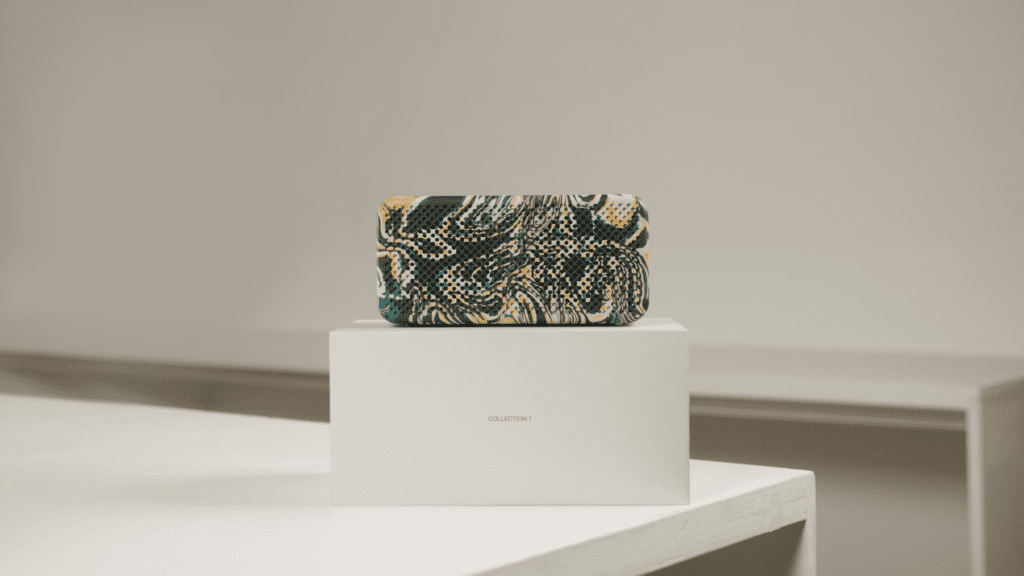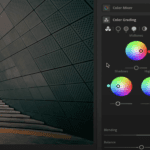As we move further into 2024, the graphic and UX design industries are experiencing significant transformations. Rapid advancements in technology, shifts in user expectations, and evolving aesthetics are driving these changes. Whether you’re a seasoned designer or just starting, staying updated with these trends is crucial for creating engaging and effective designs. Here’s a detailed look at the top trends shaping the graphic and UX design landscape in 2024. Let’s look at the top trends in Graphic and UX Design Industry for 2024
1. Immersive 3D and AR/VR Experiences

What’s Happening – Top Trends in Graphic and UX Design:
The line between the physical and digital worlds continues to blur as immersive technologies like Augmented Reality (AR) and Virtual Reality (VR) become more accessible. In 2024, these technologies are not just for gaming or niche applications but are increasingly being integrated into everyday user experiences.
How It Impacts Design:
Designers are now focusing on creating more engaging, multi-sensory experiences. For example, e-commerce platforms are using AR to allow customers to visualize products in their own space before making a purchase. In UX design, creating intuitive interfaces for VR environments is becoming a specialized skill.
Key Considerations:
- Ensure that 3D and AR/VR experiences are accessible and user-friendly.
- Maintain a balance between technological novelty and usability.
- Focus on creating immersive yet inclusive experiences for all users.
Top Trends in Graphic and UX Design
2. Minimalist and Functional Aesthetics
What’s Happening:
Minimalism continues to be a dominant trend, but in 2024, it’s taking on a more functional and purposeful approach. This trend is characterized by clean, simple designs that prioritize usability and user experience over ornate visuals.
How It Impacts Design:
The focus is on eliminating unnecessary elements and distractions, allowing users to navigate interfaces effortlessly. This trend is evident in both graphic and UX design, where the emphasis is on clarity, simplicity, and ease of use.
Key Considerations:
- Use whitespace effectively to enhance visual clarity.
- Prioritize essential content and functionalities.
- Adopt a “less is more” approach to design elements and navigation.
Top Trends in Graphic and UX Design
3. Sustainable and Ethical Design

What’s Happening:
As global awareness of environmental and social issues grows, sustainable and ethical design practices are becoming more prominent. Designers are now considering the environmental impact of their work and the ethical implications of their design choices.
How It Impacts Design:
From choosing eco-friendly materials for physical products to optimizing digital content to reduce energy consumption, sustainability is at the forefront. Ethical design also involves creating inclusive and accessible experiences for diverse user groups.
Key Considerations:
- Opt for sustainable materials and production processes.
- Design digital products with energy efficiency in mind.
- Ensure accessibility and inclusivity in all design aspects.
Top Trends in Graphic and UX Design
4. AI and Machine Learning Integration

What’s Happening:
Artificial Intelligence (AI) and Machine Learning (ML) are becoming integral to the design process. These technologies are not just tools for automation but are actively shaping how design is conceptualized and executed.
How It Impacts Design:
AI can analyze user behavior to personalize experiences, generate design elements based on user preferences, and even assist in creating design prototypes. Machine learning algorithms can predict user needs and optimize design interactions accordingly.
Key Considerations:
- Use AI and ML to enhance, not replace, the creative process.
- Ensure transparency and user control over AI-driven features.
- Stay updated with the latest AI tools and platforms for design.
Top Trends in Graphic and UX Design
5. Personalized User Experiences

What’s Happening:
Personalization is no longer just a nice-to-have; it’s an expectation. Users now seek experiences tailored to their individual preferences and behaviors.
How It Impacts Design:
Designers are leveraging data to create highly customized experiences. This could range from personalized content recommendations to adaptive interfaces that change based on user behavior and preferences.
Key Considerations:
- Collect and use user data responsibly and transparently.
- Focus on creating dynamic, adaptive interfaces.
- Ensure that personalization enhances the user experience without compromising privacy.
Top Trends in Graphic and UX Design
6. Vibrant and Bold Color Palettes

What’s Happening:
After years of muted and pastel tones, vibrant and bold colors are making a comeback in 2024. This trend is about creating striking, memorable visuals that stand out.
How It Impacts Design:
Incorporating bold colors can enhance brand identity and make designs more engaging. This trend is particularly evident in branding, digital interfaces, and promotional materials where attention-grabbing aesthetics are crucial.
Key Considerations:
- Use bold colors to highlight key elements and guide user attention.
- Balance vibrant colors with neutral tones to avoid overwhelming the user.
- Consider color psychology and cultural implications in your choices.
7. Advanced Microinteractions and Animations

What’s Happening:
Microinteractions and animations are becoming more sophisticated and integral to user experience. These subtle design elements enhance user engagement and provide intuitive feedback.
How It Impacts Design:
Microinteractions can guide users through tasks, provide feedback, and create a more enjoyable experience. Advanced animations add depth and fluidity to digital interfaces, making them feel more dynamic and responsive.
Key Considerations:
- Use microinteractions to improve usability and guide user behavior.
- Ensure that animations are smooth and do not hinder performance.
- Keep interactions subtle and contextually relevant to avoid distraction.
8. Inclusive and Accessible Design

Photo by charlesdeluvio on Unsplash
What’s Happening:
Inclusivity and accessibility are no longer optional—they are essential components of good design. The push for digital accessibility and inclusion is stronger than ever, driven by both social responsibility and regulatory requirements.
How It Impacts Design:
Designers are focusing on creating products that are usable by people of all abilities and backgrounds. This includes considering visual, auditory, and cognitive accessibility in design choices.
Key Considerations:
- Follow accessibility guidelines such as WCAG (Web Content Accessibility Guidelines).
- Conduct user testing with diverse groups to ensure inclusivity.
- Design with empathy and consider the needs of all users.
9. Dark Mode Design
What’s Happening:
Dark mode has become a standard feature in many applications and websites. This trend is driven by user demand for interfaces that reduce eye strain and save battery life on mobile devices.
How It Impacts Design:
Designing for dark mode involves more than just inverting colors. It requires careful consideration of contrast, readability, and visual hierarchy to ensure a seamless and comfortable user experience.
Key Considerations:
- Test designs extensively in both light and dark modes.
- Adjust color schemes to maintain readability and visual appeal in dark mode.
- Ensure that dark mode enhances user comfort without compromising functionality.
10. Continuous Learning and Adaptation
What’s Happening:
The pace of change in design and technology means that continuous learning and adaptation are more important than ever. Designers must stay abreast of new tools, techniques, and trends to remain competitive and effective.
How It Impacts Design:
Keeping up with industry developments and acquiring new skills is crucial. This involves participating in workshops, following thought leaders, and engaging with the design community to stay updated and inspired.
Key Considerations:
- Dedicate time to learning new tools and techniques.
- Engage with the design community through events, forums, and social media.
- Be open to feedback and ready to adapt your design approach as trends evolve.
Conclusion
The graphic and UX design industries are in a state of dynamic evolution. Embracing these trends in 2024 will not only help you stay relevant but also enable you to create more effective, engaging, and inclusive designs. Whether it’s through adopting new technologies, refining your design aesthetics, or ensuring that your work is accessible to all, staying ahead of the curve is key to success in the rapidly changing landscape of design.
By keeping an eye on these trends and continuously honing your skills, you can ensure that your designs not only meet but exceed the expectations of users and clients in 2024 and beyond.












